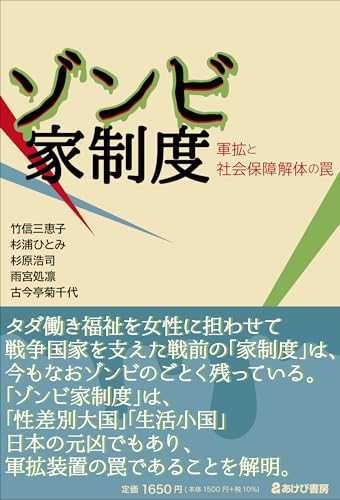2012.10.31 Wed
By Mine Yagi 9/20/12 (Thursday)
Okinawa Times: Dated 9/9 article on the Rally
Participants exceeded 100,000. The Mayor of Naha (Takeshi Onaga) strongly criticized the action taken by the Japanese and the U.S. government by saying, “the way this deployment is handled is no different from that after the war when they took over our land forcibly with a bulldozer and a bayonet.”
In 1952, in exchange for the San Francisco Peace Treaty, Yamato (the mainlands of Japan) submitted Okinawa under the U.S. military administration, truncating the southern islands.
Before and after the reinstatement of Okinawa, a freelance reporter and a critic, RoTakenaka, visited Okinawa countless times and predicted that “after being returned to the mainland, this island will be turned into tourism and the pure culture of Okinawa will be lost.” (May Your Strength be your Weapon! The Republic of Ryukyu)
Furthermore, end of last year, with regards to the environmental effect assessment involving the Henoko relocation issue; to the question put forward by a press, “When will the written evaluation be submitted?”, Satoshi Tanaka, Chief Defense Facility Officer responded, “Who would say, ‘I am going to commit a rape’ before actually doing so?” He shocked everyone who heard this response, and of course, he was dismissed from his position a couple of days later for making such an abusive statement.
Anger held deep within the heart, Uchinanchu are keenly watching the future of this country: – the strengthening of military reorganization by Japan and the US governments with the movement of the Senkaku Islands in the background.
Ryukyu Kingdom was engaged in “Tribute/Sealed book” trade once with China without using a weapon and had a rich distribution network in Southeast Asia. For example, a specialty of Okinawa, awamori (alcoholic beverage) is made by distilling fermented rice from Thailand, a delicious alcohol that was born from the ancient interaction with the Siamese. Yes, the sea has no border.
I found A Life of Okinawans (Tenkuu Planning Edition, Chie-no-mori Books, Kobunsha) at Teramachi Sangetsu bookstore in Kyoto. (Oh, I just noticed that Chizuko Ueno has an article in it.)
Although Kachashii dance unite people together as a group dance, “chanpuru” blends people to make one unity but leaving distinct personality and individuality. That’s where the diversity of Okinawa lies.
I met an Okinawan woman who gave me a tour of both the front and back doors of Okinawa. But three years ago, she left for Niraikanai, the other side of the sea of Okinawa without waiting for her 50th birthday.
Next stop was Okinawa national Hansen’s disease sanatorium, “Okinawa Ai Rakuen” located in Nago City on Yagaji Island, floating in Hanejinai Sea. It was surrounded in obscurity quietness. There had not been a bridge to get across to the island before.
While the woman who guided me and I drank coffee, we got into a subject about a train I had taken often.
That train retired after 40 years of its operation in March 2008.
As a traveler, when visiting any country, I always remember to be humble to the people of that land while appreciating their thoughtfulness.
Category: Travel at Leisure
Original article on the WAN website by Mine Yagi (September 20, 2012)
Translated and adapted by M. Doioka
カテゴリー:Other
 慰安婦
慰安婦 貧困・福祉
貧困・福祉 DV・性暴力・ハラスメント
DV・性暴力・ハラスメント 非婚・結婚・離婚
非婚・結婚・離婚 セクシュアリティ
セクシュアリティ くらし・生活
くらし・生活 身体・健康
身体・健康 リプロ・ヘルス
リプロ・ヘルス 脱原発
脱原発 女性政策
女性政策 憲法・平和
憲法・平和 高齢社会
高齢社会 子育て・教育
子育て・教育 性表現
性表現 LGBT
LGBT 最終講義
最終講義 博士論文
博士論文 研究助成・公募
研究助成・公募 アート情報
アート情報 女性運動・グループ
女性運動・グループ フェミニストカウンセリング
フェミニストカウンセリング 弁護士
弁護士 女性センター
女性センター セレクトニュース
セレクトニュース マスコミが騒がないニュース
マスコミが騒がないニュース 女の本屋
女の本屋 ブックトーク
ブックトーク シネマラウンジ
シネマラウンジ ミニコミ図書館
ミニコミ図書館 エッセイ
エッセイ WAN基金
WAN基金 お助け情報
お助け情報 WANマーケット
WANマーケット 女と政治をつなぐ
女と政治をつなぐ Worldwide WAN
Worldwide WAN わいわいWAN
わいわいWAN 女性学講座
女性学講座 上野研究室
上野研究室 原発ゼロの道
原発ゼロの道 動画
動画



![[広告]広告募集中](https://wan.or.jp/assets/front/img/side_ads-call.png)












